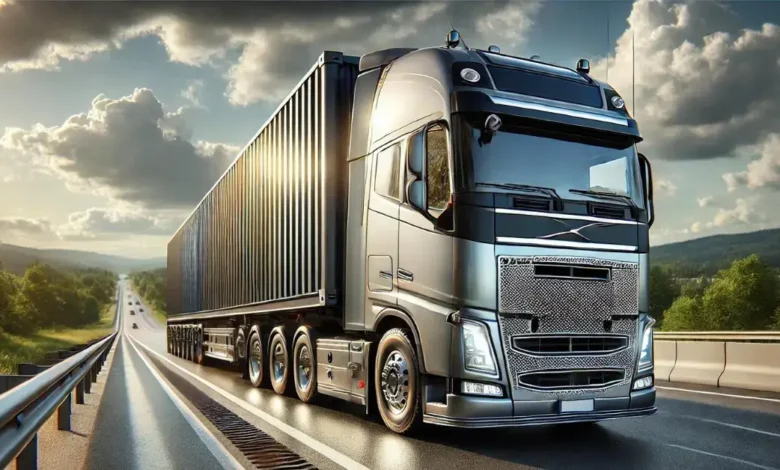Rena Monrovia When You Transport Something By Car …

“Rena Monrovia when you transport something by car …” might not be the first thing that comes to mind. Still, this incident teaches us valuable lessons about the importance of safety and preparation when moving goods.
The Rena Monrovia grounding disaster, though related to maritime transport, highlights how critical it is to secure and manage loads, whether by sea or on the road. In this article, we’ll share best practices for safely transporting items by car, drawing parallels from the Rena Monrovia incident to help you avoid common mistakes and ensure smooth transportation.
KEY TAKEAWAYS
- Always check your vehicle’s weight capacity before loading.
- Secure cargo with straps or bungee cords to prevent movement.
- Distribute weight evenly to maintain vehicle stability.
- Plan your route to avoid rough roads and adverse weather conditions.
- Never overload your car; it compromises safety and handling.
What is Car Transport?
Car transport is simply using a car to move items from one location to another. This can range from small personal items like groceries to larger objects like furniture or equipment. I’ve had many occasions where you may have needed to move things by car—helping friends move, transporting items for a garage sale, and even taking emergency supplies during storms. Car transport is common for deliveries, home relocations, and even quick errands. The versatility of a car allows you to move things conveniently, but it requires careful planning to do it safely.
Key Considerations When You Transport Something by Car
When you transport something by car, there are several important factors to keep in mind:
Plan Your Route:
Before you load up your car, it’s important to plan your route. You need to consider road conditions, the distance you’ll be traveling, and if the route is safe for your load. A smooth route can make all the difference in ensuring that your cargo stays intact.
Weather Conditions:
Bad weather can have a huge impact on transporting goods by car. Rain, snow, and wind make the road slippery and reduce visibility. If the weather turns bad, it’s best to delay your trip or take extra precautions to secure your load properly.
Vehicle Capacity:
One of the most important things to remember is that your car has limits. You can’t just pack it full without considering whether the car can handle the weight. Always check your vehicle’s manual to see how much weight it can safely carry, and make sure the load is within those limits.

Secure Your Cargo Properly
One can’t stress enough how important it is to secure your cargo properly. Here are some things to keep in mind:
Loose Items: Loose items can roll around or fly out of the car during sudden stops. To prevent this, you should use straps or bungee cords to tie down any loose objects. If you’re transporting smaller items, put them in boxes or bags that are securely fastened.
Weight Distribution: Make sure the weight in your car is distributed evenly. Heavy items should be placed in the center or as close to the car’s floor as possible. This helps maintain balance and reduces the risk of the car tipping over or becoming unstable.
Emergency Equipment: Always carry basic equipment like straps, blankets, or covers to help secure your cargo. These items come in handy when you need to stop midway and adjust things.
Best Practices for Transporting Goods by Car
Here are some best practices to keep in mind when transporting goods by car:
Ensure Cargo Safety:
Never overload your car. Overloading can damage your vehicle and put your safety at risk. Stick to the weight limits provided in the car’s manual.
Choose the Right Vehicle:
Make sure you choose a vehicle that suits your needs. If you’re transporting large items, a truck or van might be a better option than a regular sedan.
Secure Your Load:
Always double-check that your load is properly secured before starting your trip. Cargo shifts during driving are common and can lead to accidents or damage to your goods.
Understanding Vehicle Capacity and Weight Distribution
Knowing your car’s capacity is essential. I learned this the hard way when I tried to transport more than my sedan could handle, which led to some serious suspension issues.
Vehicle Weight Limits:
Your car’s manual will have all the information about its load capacity. This includes both the weight the car can carry inside and the towing capacity if you’re using a trailer.
Distribute Weight Evenly:
When loading your car, make sure that the weight is distributed evenly across all sides. Putting too much weight on one side can cause the car to tilt or put extra strain on the tires and suspension.
Read Also: Love What You Have, Before Life Teaches You to Lov – Tymoff
The MV Rena Grounding and Lessons for Car Transport
The MV Rena grounding incident was a major maritime disaster that involved a cargo ship running aground on a reef. While the scale of the disaster was far greater than anything that could happen with a car, the lessons are still relevant.
The ship was overloaded and not properly secured, which contributed to the severity of the incident. It’s a reminder that when you transport goods, whether by sea or by car, cutting corners or ignoring safety protocols can lead to disaster. Always take the time to do things right, and avoid taking risks with overloading or poor load security.
How to Secure and Transport Goods Safely: Rena Monrovia when you transport something by car …
When securing and transporting goods, there are some basic steps you can follow:
Boxes: For boxes, make sure they are packed tightly and stacked in a way that they won’t shift during the drive. Use rope or straps to hold them in place.
Furniture: When moving furniture, disassemble it if possible. Wrap the pieces in blankets to avoid scratches, and use straps to secure them to the car’s frame.
Fragile Items: For fragile items, use padding like bubble wrap or towels to protect them. Place them in a sturdy container and make sure they are cushioned from all sides to avoid damage from sudden stops or bumps.
Emergency Protocols: Always have a backup plan in case something goes wrong during transport. If you get into an accident or the car breaks down, make sure you have roadside assistance and know how to secure your items while waiting for help.
Transporting Large Items and Weight Management
Transporting large items, like furniture or heavy equipment, requires extra care. I once moved a large desk by car and didn’t realize how much weight it added until I felt my car struggling uphill.
- Check Vehicle Suspension: Large or heavy items put a lot of strain on your car’s suspension. Before transporting anything large, check to make sure your vehicle’s suspension can handle the weight.
- Handling Large Items: Make sure large items are tied down securely and positioned in a way that they don’t block your view while driving.
Legal Considerations and Insurance When Transporting Goods
Before transporting goods, check your insurance and make sure you’re following legal regulations:
- Insurance Coverage: Make sure your car insurance covers the transportation of goods. Some policies may have limits or exclusions for certain types of cargo.
- Legal Limits: In most places, there are laws about how much weight you can carry in a vehicle. Make sure you’re within the legal limits to avoid fines or accidents.
Avoiding Common Mistakes in Car Transportation
When transporting goods by car, it’s easy to make mistakes. Here are a few common ones to avoid:
- Overloading: Never exceed your vehicle’s weight limit. Overloading can damage the car and make it harder to control.
- Poor Securing Methods: Make sure your cargo is properly tied down and won’t shift during the drive. Failing to secure items can cause them to move around or even fall out.
- Poor Route Planning: Always plan your route to avoid rough roads or high-traffic areas, which can increase the risk of accidents.
The Environmental Impact of Transporting Goods
Transporting goods by car has an impact on the environment. Vehicles contribute to air pollution, and carrying heavy loads increases fuel consumption. Here are some ways to minimize your environmental footprint:
Try to transport goods in one trip to reduce the number of journeys. Also, consider using fuel-efficient vehicles when possible. Properly inflated tires can also improve fuel efficiency.
Final Thoughts – Rena Monrovia when you transport something by car …
Transporting goods by car might seem straightforward, but it requires careful planning and attention to detail. Whether it’s moving furniture, making deliveries, or handling emergency situations, ensuring that your cargo is safe and your vehicle is suited for the job is crucial.
The “rena monrovia when you transport something by car …” scenario teaches us valuable lessons about the importance of proper planning and safety protocols. In this article, we’ll explore best practices for transporting goods by car, drawing parallels from incidents like the MV Rena disaster to emphasize the need for caution and preparation.
FAQs – Rena Monrovia when you transport something by car …
What ship is used to transport cars?
Large ships like the MV Rena are often used for transporting vehicles across long distances.
What vehicle is best for transporting heavy items?
Trucks or vans are ideal for transporting heavy or oversized items. Sedans and smaller cars are better for light loads.
What are the weight limits for a typical car?
Most sedans can handle around 800 to 1,000 pounds, but always check your car’s manual for the exact weight limit.



